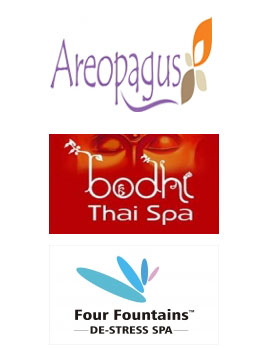Advanced Aromatherapy Techniques: Exploring Blending, Therapeutic Uses, and the Science of Olfaction
2. Advanced Aromatherapy Techniques: Exploring Blending, Therapeutic Uses, and the Science of Olfaction
Aromatherapy, a practice that leverages the aromatic essences of plants to promote health and well-being, has roots stretching back thousands of years. Beyond its traditional uses, advanced aromatherapy techniques offer a more nuanced approach to harnessing the power of essential oils for specific health concerns, blending, and understanding the science behind olfaction. This article delves into blending techniques, therapeutic uses for particular health issues, profiles on less common oils, and the fascinating science of olfaction that underpins aromatherapy.
Blending Techniques for Enhanced Synergy
The art of blending essential oils lies at the heart of aromatherapy, creating synergies where the combined effect of the oils is greater than the sum of their individual effects. Mastering blending techniques is crucial for any aromatherapist seeking to tailor treatments to specific needs.
1. Layering Blends: This technique involves applying individual oils one at a time, allowing each to absorb before adding the next. This method respects the unique absorption rate of each oil and can create a personalized therapeutic experience.
2. Equiproportionate Blends: Here, oils are mixed in equal parts to achieve a balance between their therapeutic properties. This method is often used when oils have complementary effects, such as lavender and chamomile for relaxation.
3. Sequential Blending: Tailored for complex therapeutic goals, this method involves creating a series of blends to be used in a specific sequence. It's particularly useful for addressing multiple symptoms or stages of a condition.
Therapeutic Uses for Specific Health Concerns
Advanced aromatherapy delves into creating bespoke treatments for individual health concerns. Here are some targeted uses:
1. Stress and Anxiety: A blend of lavender, bergamot, and frankincense can be profoundly soothing, offering natural relief from stress and anxiety.
2. Chronic Pain Management: Eucalyptus and peppermint, known for their analgesic properties, can be blended for pain relief, particularly in cases of arthritis or muscle pain.
3. Insomnia: A combination of Roman chamomile and valerian root oils can help soothe the nervous system and promote a peaceful sleep.
4. Respiratory Issues: Eucalyptus, tea tree, and thyme oils are excellent for supporting respiratory health, helping to clear congestion and combat infection.
Profiles on Less Common Oils
While many are familiar with lavender and peppermint, the world of essential oils is vast and varied. Here are a few less common oils with unique therapeutic properties:
1. Plai (Zingiber cassumunar): Native to Thailand, Plai is renowned for its anti-inflammatory and pain-relieving properties, making it a gem for those with chronic pain or injuries.
2. Kunzea (Kunzea ambigua): This Australian native is celebrated for its ability to relieve stress, soothe muscle aches, and support respiratory health.
3. Blue Tansy (Tanacetum annuum): With its striking blue color, Blue Tansy is valued for its anti-inflammatory and calming effects, beneficial in skincare and for easing emotional turmoil.
The Science Behind Olfaction
Understanding the science of olfaction, or the sense of smell, is fundamental in aromatherapy. Olfaction involves the detection of odor molecules by the olfactory system, triggering a series of neural responses that influence emotions, memories, and even physiological reactions. This process underscores the therapeutic potential of essential oils, as their aromatic molecules can directly impact our emotional and physical health through olfactory pathways.
1. Neural Pathways: Aromatic molecules interact with receptors in the nasal cavity, sending signals directly to the limbic system, the part of the brain responsible for emotions and memory.
2. Psychological and Physical Responses: This direct communication can trigger profound psychological and physical responses, from calming the nervous system to stimulating immune responses.
Advanced aromatherapy techniques, with their deep dive into blending, therapeutic uses, lesser-known oils, and the underlying science, offer a powerful toolset for those seeking to promote health and well-being through the natural potency of essential oils. As we continue to explore and understand these techniques, the boundary between traditional practices and modern science becomes increasingly intertwined, offering new pathways to healing and harmony.
Read previous blog article on Introduction to Aromatherapy and Essential Oils















Leave your reply Cancel Reply